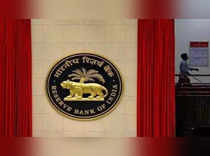 Agencies
AgenciesWhile food inflation remains a concern, the second-order effects from higher input prices are likely to be more benign than initially estimated. Lower commodity prices, particularly of crude oil, should reduce risks of imported inflation.
This could cushion the negative impact on the Indian currency, which is being pummelled over concerns of a record high trade deficit and continued withdrawal from Indian financial assets by foreign funds.
“If oil prices sustain at the lower level, say around $100 per barrel, it erases the need for upward revision of inflation by the Monetary Policy Committee,” said Madan Sabnavis, chief economist, Bank of Baroda. “Other commodity prices have already started softening since May. If the (softening) trend extends, it should help narrow the trade deficit, a key concern that weighs on the rupee’s value against the dollar.”
 Agencies
AgenciesThe rupee gained 0.09 percent to close at 79.30 to a dollar Wednesday. It was the fourth best performing Asian currency during the day, showed Bloomberg data compiled by ETIG. It hit a lifetime low of 79.38/$ on Tuesday.
Commodity prices, which surged to record highs, are easing. The Bloomberg Commodity Price Index was at 112.2 on Wednesday versus 129.03 on April 22, when the central bank published the minutes of the meeting of its rate-setting panel. The gauge dropped 13% during the period.
“The broad-based jump in global commodity prices has exacerbated inflationary pressures across advanced economies and emerging market economies alike causing a sharp revision in their inflation projections,” the MPC had then said in the policy statement.
Similarly, the LME Metal index, which encompasses six variants, was at 3,696.80 on July 5 versus 5,060.60 in the third week of April, recording a plunge of about 27 percent, showed data compiled by ETIG.
Brent crude oil has been falling in the past few days amid concerns of a recession. It traded at $106 per barrel Wednesday from $119 toward the end of June, slipping nearly 11 percent.
“If oil prices remain softer, we are unlikely to see any upward revision of inflation prices,” said Rahul Bajoria, India economist at Barclays. “The monsoons will play a key role here, influencing food prices along with crude oil. We need to see how overall commodity prices are shaping up in the coming weeks, helping the trade deficit to narrow.”
Lower oil prices should help bridge the trade gap.
“Any reduction of the trade deficit will work well, arresting any sudden loss of the rupee’s value to the dollar,” he said.
RBI unveils steps to boost foreign exchange inflows to arrest rupee fall

On the assumption of a normal monsoon in 2022 and average crude oil price (Indian basket) of $ 105 per barrel, the RBI projected inflation at 6.7 percent in FY23 at its June policy, having revised upward its earlier estimate by 100 basis points.
“The widening trade deficit and elevated prices are spooking the currency market, with the rupee plunging to lifetime lows,” said Kunal Sodhani, AVP at Shinhan Bank. “If oil prices stay low and with no further upward revision in inflation projections, the rupee should get some support through its free fall versus the dollar.”
India’s trade deficit, or excess of imports over exports, swelled to a record $25.63 billion in June, driven by imports of petroleum, coal and gold. Exports were muted, causing the gap to widen.
Read More News on
Download The Economic Times News App to get Daily Market Updates & Live Business News.
Subscribe to The Economic Times Prime and read the Economic Times ePaper Online.and Sensex Today.
Top Trending Stocks: SBI Share Price, Axis Bank Share Price, HDFC Bank Share Price, Infosys Share Price, Wipro Share Price, NTPC Share Price
Read More News on
Download The Economic Times News App to get Daily Market Updates & Live Business News.
Subscribe to The Economic Times Prime and read the Economic Times ePaper Online.and Sensex Today.
Top Trending Stocks: SBI Share Price, Axis Bank Share Price, HDFC Bank Share Price, Infosys Share Price, Wipro Share Price, NTPC Share Price












 Get Unlimited Access to The Economic Times
Get Unlimited Access to The Economic Times
